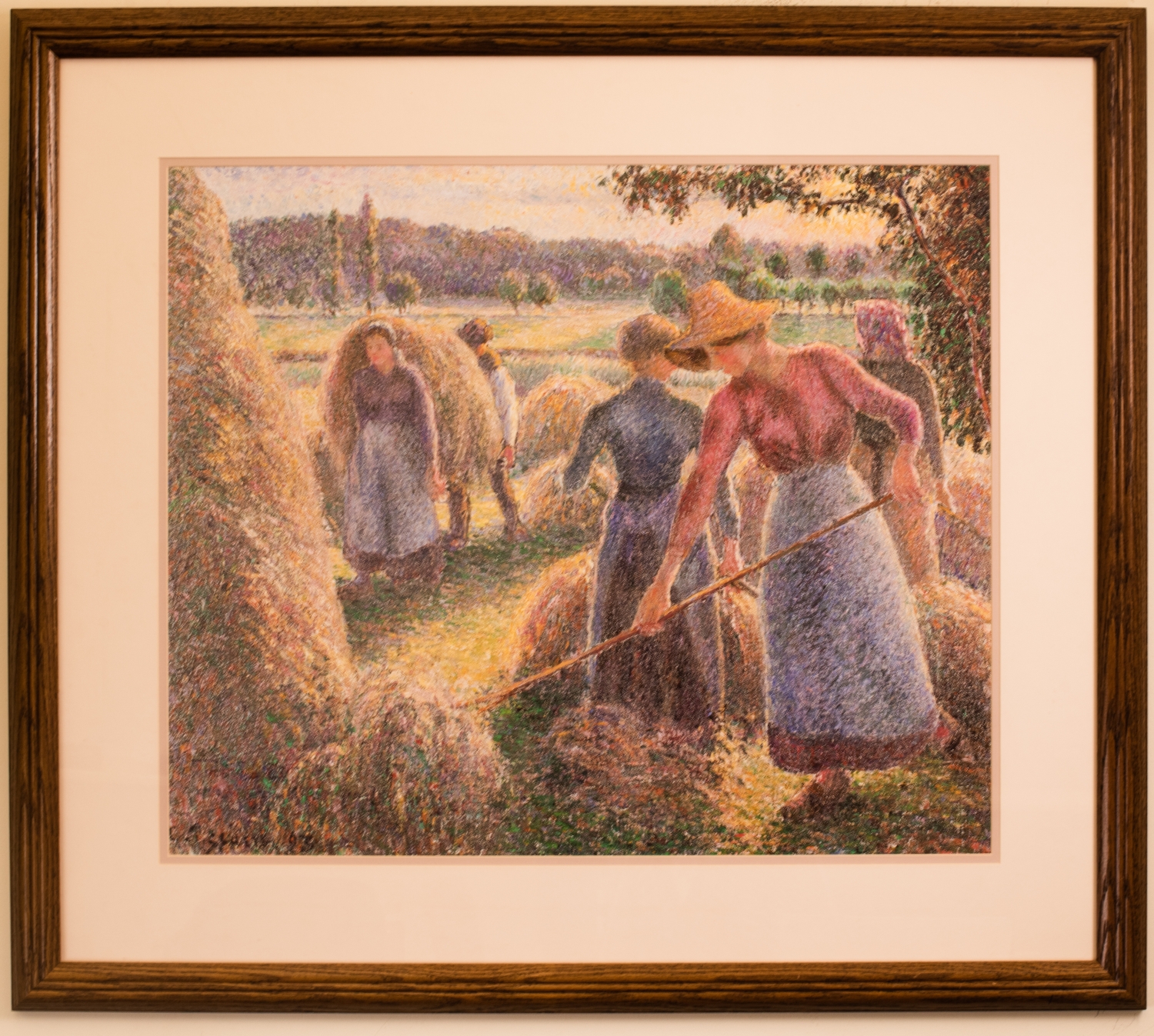Haymakers, Evening, Eragny
Camille Pissarro was born on 10 July 1830 on the island of St. Thomas to Frederick and Rachel Manzano de Pissarro. Pissarro was one of the most renowned French Impressionist painters of the 19th century. During his formative years Pissarrro studied at the Savary Academy in Passy near Paris. While in school Pissarro developed a solid grounding towards painting and drawing, and was instructed by Monsieur Savary to observe nature as part of his artist discipline. Pissarro returned to St. Thomas where he drew in his free time. In 1855 Pissarro moved back to Paris, there he enrolled in various classes taught by masters, at schools such as École des Beaux-Arts and Académie Suisse. In 1859, Pissarro's paintings were accepted into the Paris Salon's annual exhibition. After a year in Paris, Pissarro began to leave the city and paint scenes of the countryside. Pissarro is known as the patriarchal influence among his colleagues, notably Paul Cezanne and Paul Gauguin. This work incorporates the rural picturesque landscapes that Pissarro gravitated to. Here Pissarro captures daily life in the country, as workers carry bales, rake and gather hay. Delicate tones emerge to create an idealized scene that brings to mind a day coming to it's close after a long work day. The horizon contains hues of blue, pink and white to create a soft horizon. The forested area in the background subtly changes into a hay-field, bringing a sense of an agricultural golden age. The workers are portrayed as simple farmers, wearing modest clothing to be about their labors. The four women are all aproned, and attired in dresses with long sleeves. There is one lone male figure, helping to carry a medium size bale.

